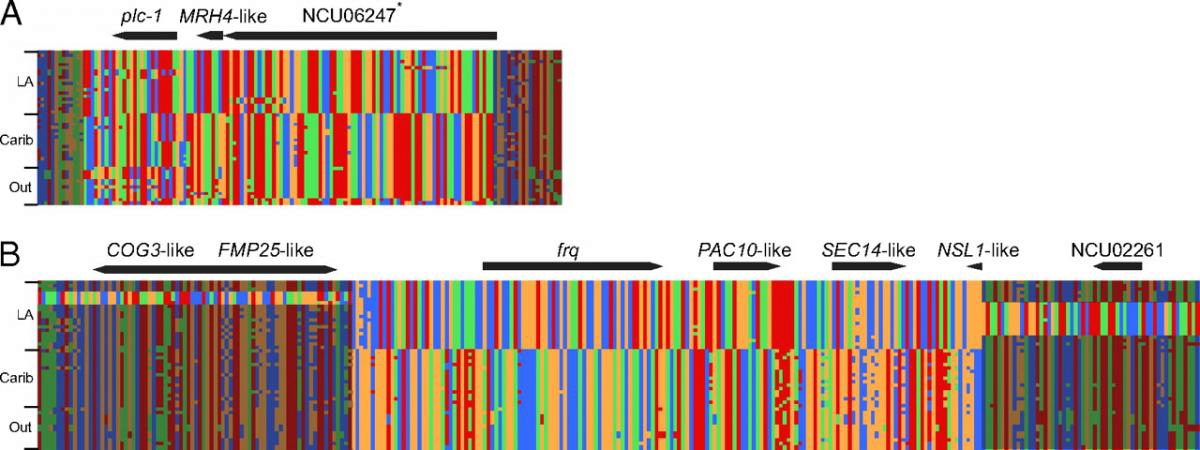To highlight one of our basic projects, we have used population genomics to find genes involved in adaptation of newly diverged populations, a first for a microbe. We call our approach, reverse-ecology. We started with a group of 50 genomes and found that there were two populations in the group and one of them was north of the other and 9˚C colder in the depths of winter. Within these two populations, we found two small regions of the genome that were exceptionally diverged. Knowing the functions of the genes in those two regions, we guessed that temperature was the environmental parameter important to adaptation. Growth experiments at normal and low temperature failed to disprove our hypothesis. From gene deletion mutants of each of the genes in the two regions, we found one gene in each region that, when deleted, negatively affected fitness at low temperature [Ellison et al. 2011].

Figure 1. Bayesian phylogeny made from exon sequence from Neurospora crassa isolates showing two, genetically differentiated populations in what had been thought to be one population. Comparison of the genomes of the Louisiana and Caribbean (dotted line) populations revealed the "islands of differentiation" seen in Figure 2. (Ellison et al. 2011. PNAS 107:2831-2836).

Figure 2. Island of differentiation. (A. chromosome 3, B chromosome 7) uncovered by genome scans of Neurospora crassa individuals from the Louisiana (LA) and Caribbean (Carib) populations. Genes in these islands are candidates for those important to adaptation. The mean annual low temperature in Louisiana is 10 degrees C lower in than the Caribbean and,using growth as a measure of fitness, Louisiana individuals were more fit than Caribbean individuals at low temperature. A Louisiana strain with a gene deletion for PAC 10 (prefoldin) or for MRH4 (RNA helicase) also showed lower fitness than wild type at low temperature, leaving intact our hypothesis that genes in the islands are important for adaptation to growth at low temperature. (Ellison et al. 2011. PNAS 107:2831-2836).

